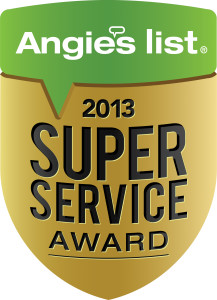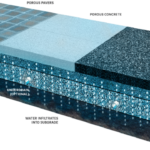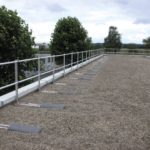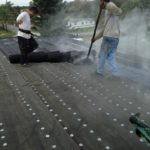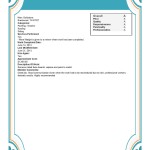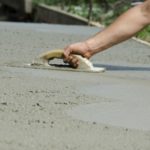Road Marking Technique
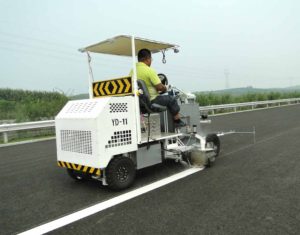 Road marking refers to any kind of material or tools used on road surfaces to communicate official information. Markings are also usually applied to other facilities that are used to mark spaces for parking. These markings are mainly found on paved roadways where they serve to provide guidance to both pedestrians and motorists.
Road marking refers to any kind of material or tools used on road surfaces to communicate official information. Markings are also usually applied to other facilities that are used to mark spaces for parking. These markings are mainly found on paved roadways where they serve to provide guidance to both pedestrians and motorists.
Road markings primarily ensure better orientation and increase traffic safety at the same time.Roadmarking means the marking of traffic routes for better orientation purposes and to increase traffic safety.The major equipment used for Road marking includes, but are not limited to the road marking machine; gas; rope; chisel; cleaning equipment and necessary small tools.
Procedures for Road Marking
The general method and procedures for road marking are quite straightforward, but it may also have slight difference due to the material used. The general step by step for road marking is as follows.
Step 1: Center line will be set out and get approvals about the center line before the commencement of line marking.Road surface shall be cleaned manually using the wire brush and wash the surface where necessary.
Step 2: As per the approved road marking design the road marking lines & symbols will be set out means of white chalk and approval will be decided by Engineer.
Step 3: The thermoplastic material is heated in the range of temperature around 170 ~ 200 C and maintains in the range during the entire laying process.
Step 4: After getting the approval of the temporary marking on the asphalt surface permanent marking shall be carried out by considering required color. This machine has the facility of adding glass beads into the paint while painting.
Step 5: All roads marking shall be protected from traffic until the marked paint get dry.
As mentioned, the material chosen for road marking will also influence the road marking techniques. Herewith some techniques that are based on the road marking materials.
- Thermoplastic
The use of thermoplastic materials that contain glass beads, plasticisers and fillers are one of the most common methods of road marking. After the thermoplastic markings are laid on the road, glass beads are immediately applied to the surface so that they can be fixed in place as the hot material sets. These glass beads help to enhance reflectivity.
Using thermoplastic materials is one of the cheapest methods, and with good traffic management, it is possible to achieve vast outputs. The lines created can also be refreshed in the future without the need to remove them first.
Since the 1950’s this method has been used for marking over 95% of UK and Ireland public roads, and it is also commonly used around the globe. Although the main colors are yellow and white, other available colors include blue, green and red.
- Cold plastic road marking
Methyl-Methacrylate, abbreviated as MMA, is a cold plastic technology that is resistant to the heat and cold. This material is extremely durable making it the best method to use in places with the highest volume of traffic, like roundabouts, give-way lines, and box junctions.
- Paint
When combined with additives like retroreflective glass beads, paint can be used for marking travel lanes. It is also useful for marking parking lots and special purpose spaces such as loading zones, time-restricted parking locations, and areas for disabled parking.
Usually, the paint is applied immediately after paving the road, and as it is an inexpensive method of road marking in the UK, it has been used widely since the early 1950’s.
- Preformed Thermoplastic
Preformed thermoplastic is a highly durable and cost-efficient material most commonly used to mark out stop lines, crossings, bike lanes, and arrows. It comes pre-cut in the design appropriate for its specific use and is applied to the road using a propane torch.
Irrespective of the marking material, there is one requirement that is common to all the above methods if they are to perform to their best; they need to be applied on a clean and dry surface.
It is important that there is consistency in these road surface markings as this helps to reduce confusion regarding their meaning. Lately, there have been concerted efforts to make sure that these markings are standardized across borders.
Safety precaution will be taken complying with the Traffic & Safety Plan. Every precaution will be taken to avoid any accidents & damages to adjoining properties, workers, and road users. All workers will be advised to wear helmets, boots, and gloves while working. There will be a stand by a vehicle near site always if needed in a case of an accident.
Contact us
 Phone Call |
 Text Message |
 |

